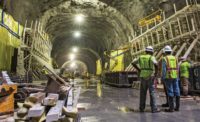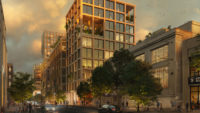A plan to extend New York City’s Second Avenue subway line into Manhattan's East Harlem section received a significant funding boost Nov. 4 as the Federal Transit Administration formally agreed to provide $3.4 billion for the project.
Extending the line 1.76 miles and adding three new stations is expected to cost $7.7 billion.
The project funding, which comes from the agency's Capital Investment Grants program, is that program's largest yet to be provided, according to FTA.
The Second Avenue Subway Phase 2 project would improve access to jobs and education for 300,000 people in an area Senate Majority Leader Chuck Schumer (D-N.Y.) said is a “transit desert” with a population “larger than many cities.” The extension would add connections between the Q and the 4,5,6 lines and with the Metro-North Railroad, a commuter rail service to points north of the city. In addition to reaching more people, Schumer said the extension would help reduce congestion on other subway lines.
“The Second Avenue subway will have more daily riders than the entire Philadelphia and San Francisco Bay transit systems combined,” Schumer said.
The project would extend the subway line from 96th Street to 125th Street with new stations at 106th, 116th and 125th streets.
The Metropolitan Transportation Authority (MTA), which operates New York City’s subway system, has begun procurement for the work. Bids for utility relocation and building remediation associated with the project are due Nov. 16, records show. MTA also seeks proposals for project management consultant services by Nov. 21.
As ENR previously reported, MTA also plans to solicit three more contracts for tunnel boring, cut and cover construction and work on ancillary buildings plus fit-out of tunnels and stations.
Officials have envisioned a subway line to East Harlem as early as the 1930s, but concerns about costs prevented a project from being completed. The modern plan calls for some previously built tunnel segments, which were abandoned because of financial difficulties in the 1970s, to be incorporated into the project.
In Phase 1 of the Second Avenue subway, costing $4.5 billion, MTA built a 1.8-mile line with three stations that opened in early 2017. Critics lambasted the cost.
While the second phase is estimated to cost even more, the project would have “the lowest cost per rider of any major rail project in the United States,” said Janno Lieber, CEO of MTA. “This is a good value for New York, and it’s an investment we all ought to be making.”
MTA has planned for two additional future phases of work to extend the line further.





Post a comment to this article
Report Abusive Comment